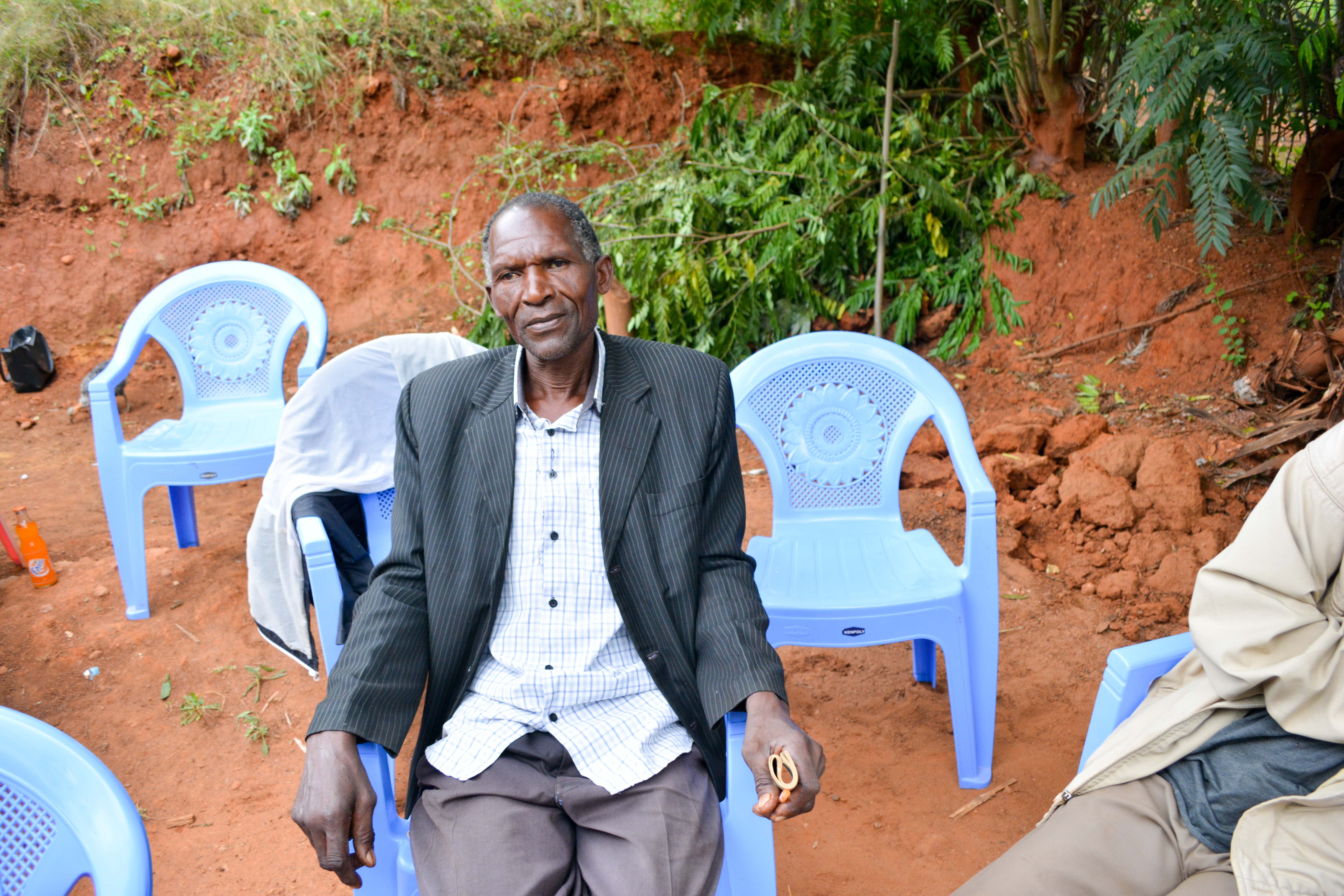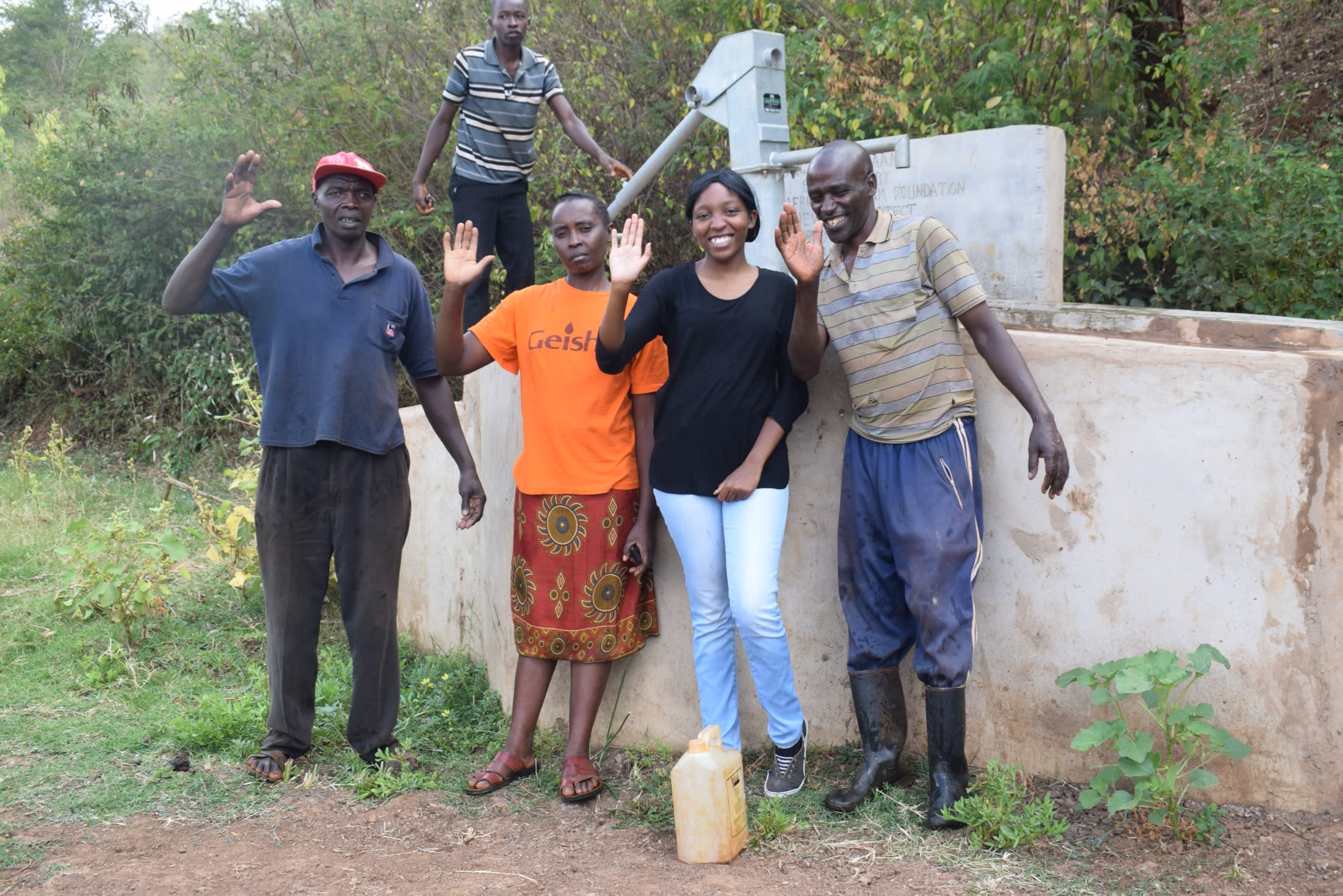The roads leading to Masola Community require a bumpy ride up and down hills. Once there, it's a much more peaceful environment. Homes are spread out over a large area, most of which are made of stone walls and iron roofs. Most of the families living here practice farming and raise livestock.
The majority of people share a common faith, Christianity, and come together often to meet. They're also united in the formation of the Masola Kaani Self-Help Group (Can you imagine where they got this name? It's because group members are from either Masola or Kaani Village.), which has the purpose of alleviating water and food scarcity in the greater region. We've been partnered with this group for the last two years and have seen the successful installation of two sand dams and two hand-dug wells. Each water project has brought clean water closer to hundreds of people. Check out all of the success they've already had in Kaani Community!
Water
If a household can afford it, they'll purchase a large plastic tank that holds rainwater to lessen the number of trips they have to make for water.
Women and children are waking up at 6am every morning to fetch water to be used for drinking, cooking, and cleaning. If one of the two hand-dug wells is too busy, they'll continue walking to the next one. These water sources provide clean water to community members, and they consider it a very important asset.
They aim to continue adding these clean water points until they have enough for the hundreds upon hundreds of people living in their greater region. Farmer Kasyoki Kalii told us, "Our area experiences long dry periods across the year, leading to rampant water shortages. By working on water projects we hope to improve our living conditions and prevent diseases associated with dirty water."
Waterborne disease is still experienced among the self-help group and their neighbors; because there are so many people relying on the two wells, people sometimes have to resort to their old polluted sources.
Sanitation
We had the privilege of visiting the Mutinda household to talk about how health, water, and sanitation have played a part in their lives and the lives of their neighbors over the last year.
Thanks to continuous training since the start of our relationship with Masola Kaani Self-Help Group, this area has 100% latrine coverage. However, there are other things we taught about during training that still haven't been adopted into the households. For example, we need to see a lot more dish racks, bathing shelters, animal pens, and garbage pits.
What we plan to do about it:
Training
We’re going to continue training Masola Community on hygiene and sanitation practices. Though our visits to households were encouraging, we want to ensure that community members are practicing the day to day habits we’re not able to observe. Food hygiene, water hygiene and treatment, personal hygiene and hand-washing will all be a focus during our next review.
Sand Dam
Building this sand dam at a spot further down the river will bring water closer to hundreds of other people. After the community picked the spot, our technical team went in and proved the viability by finding a good foundation of bedrock. Now, our engineers are busy drawing up the blueprints. We estimate the dam will be 66 meters long and 5.3 meters high.
We are unified with this community to address the water shortage. As more sand dams are built, the environment will continue to transform. As the sand dams mature and build up more sand, the water tables will rise. Along with these sand dams, hand-dug wells (check out the hand-dug well being installed next to this dam) will be installed to give locals a good, safe way to access that water.
With these projects, clean water will be brought closer to hundreds living around Masola, including the Mutinda family.
This project is a part of our shared program with Africa Sand Dam Foundation. Our team is pleased to provide the reports for this project (edited for readability) thanks to the hard work of our friends in Kenya.

 Sand Dam
Sand Dam
 Rehabilitation Project
Rehabilitation Project
































